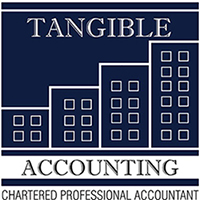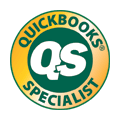Tangible Accounting
Chartered Professional Accountants
3950 14th Avenue,
Suite 401
Markham, ON L3R 0A9
(905) 604-3135
Improve The Bottom Line


Increasing revenue is not the only way to improve the bottom line.
Businesses are constantly trying to improve the bottom line. Better profits usually reflect good cash-flow management, cost control, incentivized employees and loyal, hard-working management. Profit growth also enables the business to build cash reserves for future expansion, investment, or the proverbial rainy-day fund.
Little Things Mean a Lot
When trying to pare costs, management usually looks first at the big-ticket items such as labour and machinery because they create more visible and measurable dollar amounts. There are, however, a number of other areas where small savings can add up to large savings and an improved bottom line over time.
Insurance Coverage
Automatic renewal for office, equipment or fleet ensures you will always pay more than you need. Brokers have little incentive to find the lowest rates if they know you will accept the yearly invoice.
Travel
Frequent travellers should consider booking well in advance of the trip, or booking flights later in the day if reduced rates are available.
Zero-Based Budgeting
Budgets are often prepared by simply adding a percentage to last year’s items. Many things can change in a year and you may be budgeting more than you need. Try to start from scratch and have preparers justify each cost. For instance, last year’s fuel costs may be budgeted when fuel prices were higher or more work was being done.
Credit Cards
Ensure credit cards are cleared monthly. Arrange a line of credit that can be used to pay off the high-interest credit cards in times of poor cash flow.
Withholding Taxes
Pay withholding taxes on time. Penalties and interest add up if a business is a repeat offender.
Tax Installment Payments
Canada Revenue Agency charges interest if corporations do not pay their taxes according to the installment schedule. Review the requirements for the current year using last year’s numbers. If budget forecasts expect taxable income will be down, consider reducing installment payments to moderate the cash outflow and perhaps reduce interest costs on the business line of credit.
In-House Kitchen
Consider having a small in-house kitchen for staff coffee breaks and brown-bag lunches. The cost of establishing the facility and providing beverages for staff and guests could well be offset by reducing the cost in both money and the time for employees to leave the premises for their regular run to the local restaurant.
Traffic Laws
Obeying the speed limit and all other traffic laws reduces the cost of driving. Fines incurred by an employee while driving a company vehicle may be an additional cost for the company, particularly with respect to increased insurance premiums.
Off-Hours Deliveries
If possible, arrange to make service calls or deliveries before or after peak travel time. Not only will there be savings in fuel as well as in the wear and tear on the vehicle, but staff will also be more productive: they are being paid to provide the service, not to sit in traffic.
Track equipment and vehicle costs on a per-unit basis.
Equipment Costs
Tracking the purchase price and depreciation of equipment and vehicles on a per-unit basis along with insurance, fuel, repairs and maintenance provides insight into the true cost of the unit. These costs can be compared to the charge-out rate to determine whether the unit is paying its way.
Communication Costs
At least once a year inventory all communication devices and review their carrying costs and the cost of the separate fax lines, long distance plans and Internet. It is worth investigating whether SKYPE could cut the cost of meetings and training.
Invoicing
Use email to send invoices and encourage payment with debit cards or email transfers. The increased speed of payment available with modern technology improves cash flow and reduces interest costs.
Project Management
If you manage each job as a project, resources such as material, equipment and labour, can be allocated to that specific job. Budgets are thus better controlled and benchmarks are established to measure costs and avoid overruns on future jobs. Cost-to-job monitoring of individual employees allows evaluation of skills and efficiencies for training and remuneration.
Reduce the Number of Accidents
Accidents are costly for companies. Losses to employee productivity and increased business insurance costs, in addition to costly Workplace Safety and Insurance Board (WSIB) claims and legal fees, can be reduced by ongoing safety training and education. It’s well worth the effort.
Energy Audit
An energy audit will show you where savings can be achieved by installing insulation, replacing older equipment or something as simple as using timers, motion detectors and LED lighting for the factory and office.
End of the Day
Encourage staff that need personal time during the week to do so at the end of the work day rather than in the morning or during lunch break. If their appointment is later, the additional time spent waiting in the doctor’s office is not company time. Such an approach reduces lost time and increases productivity.
8:45
Suggest that staff arrive 15 minutes before their shift starts. This allows time to get a coffee, use the facilities and exchange the usual niceties that cut into productivity. Fifteen minutes a day for 10 employees working 250 days is 625 hours. At $20 per hour the cost is $12,500.
Greater Productivity
Improving the bottom line does not mean that employees and management have to make costly changes or sacrifice existing working arrangements. As illustrated, instituting small measures will not only strengthen the bottom line but will also undoubtedly improve productivity.
Copyright © 2016 Tangible Accounting











